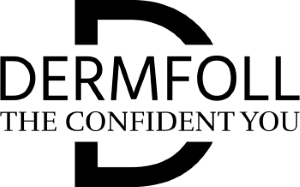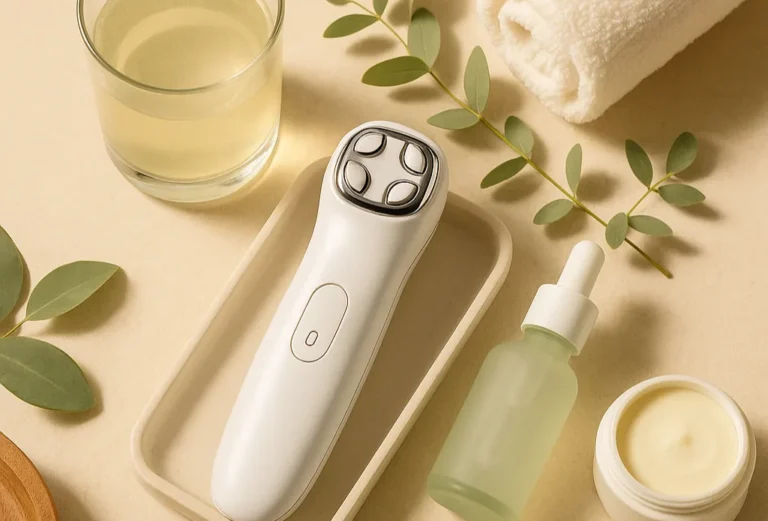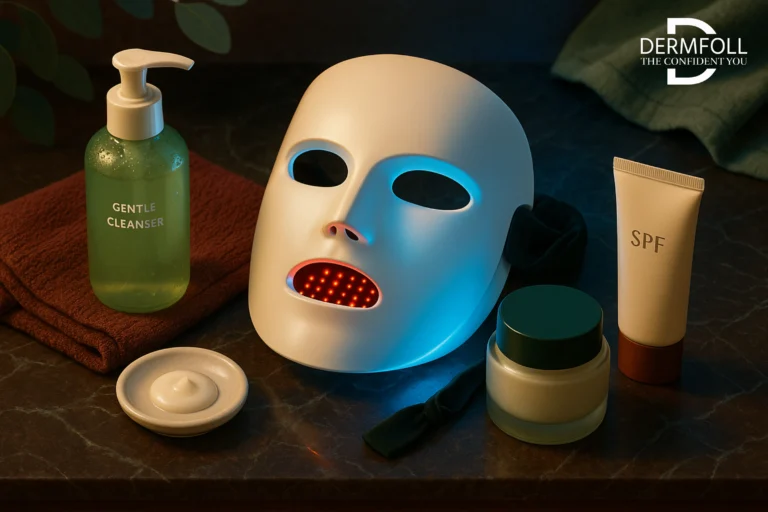Now, let’s be honest: with so many skincare claims out there, it’s tough to know what actually works. I’ve had countless readers ask me about rf facial device technology and whether combining it with collagen treatments really does anything.
And my answer? Absolutely — if you understand the science behind it.
That’s where this post comes in.
You see, hydrolyzed collagen peptides are smaller, more absorbable pieces of collagen that can be incredibly effective when used the right way.
And here’s where it gets interesting: pairing these peptides with rf devices for face — even the ones you use at home — can take your skincare to a whole new level.
In this article, I’ll walk you through:
- What hydrolyzed collagen peptides really are, and why they matter.
- How a rf facial device enhances their absorption (and why heat helps, not harms).
- The role of low molecular weight peptides vs. higher ones.
- And most importantly — how this combination supports skin tightening, hydration, and long-term skin health.
We’ll keep things simple, science-backed, and hopefully, a little fun along the way.
Let’s get into it.
Hydrolyzed collagen peptides what is it ?
Hydrolyzed collagen is collagen that has been broken down into smaller parts. These parts are called peptides.
The breakdown process occurs through hydrolysis. where “hydro” refers to water and “lysis” means “to break”. In this context, hydrolysis breaks the peptide bonds in the collagen protein, to give potent peptides.
Its purpose is to allow the collagen peptides to move in, to get absorbed and to get utilized by your skin.
But what’s the difference collagen peptide vs hydrolyzed collagen ?
so, is is hydrolyzed collagen the same as collagen peptides ? In essence, hydrolyzed collagen and collagen peptides are pretty much the same thing. Collagen that has been broken down into smaller, more manageable pieces.
The terms are often used interchangeably, which can cause confusion. Hopefully, Not anymore!
Soo all you need to know is that both these terms describe collagen that has undergone hydrolysis.
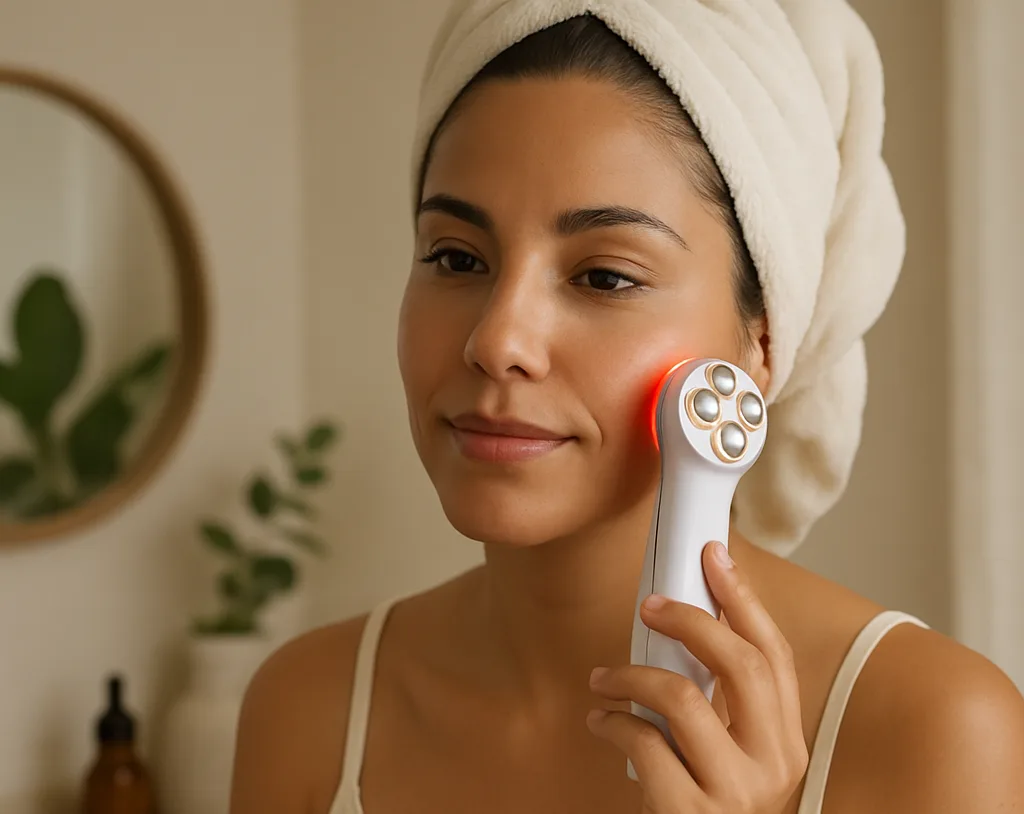
What Makes Hydrolysis Essential for Advanced Collagen Skincare ?
Alright so let’s discuss collagen, more especially hydrolyzed collagen peptides. Why is this particular form of collagen so popular in cosmetics recently? And how does it fit into the rise of RF devices for face?
You have most likely heard that firm skin is only dependent on collagen.
Yes is true. But here’s the thing – not all collagen is made equal. Traditional collagen molecules are relatively big. Consider them as large, heavy furniture that simply does not fit through the outermost layer of your skin.
Hydrolysis then comes in really handy.
Hydrolyzed collagen peptides—small enough to squeeze through the skin barrier or be absorbed orally. This Basically is the act of cutting those large collagen molecules into little bits.
When people inquire, “Hydrolyzed collagen peptides what is it?” — that’s the gist: it’s collagen, but in a broken-down, more absorbable form.
Better Absorption = Better Results
When collagen is hydrolyzed, the peptides become small enough to do two things really well:
They get into the skin more effectively when administered topically.
They’re absorbed in the gut if you’re taking them as a supplement — and yes, they’ve been found to actually reach the skin from within.
This is a game-changer for anyone battling with dryness, fine wrinkles, or skin that’s lost its bounce. These peptides function like small messengers, signaling your skin cells (particularly fibroblasts) to generate more collagen naturally.
Pairing It with RF Facial Device Treatments? Even Better.
If you’ve dipped your toes into at-home skin tech, you’ve definitely come across an RF facial device or at least seen it all over Instagram.
RF stands for radio frequency, and it works by gradually heating the deeper layers of your skin. This heat stimulates collagen formation and tightens things up – sort of like giving your skin a modest exercise.
Now here’s where it gets exciting: when you mix hydrolyzed collagen peptides with RF devices for face, you’re not merely relaying on a lotion or oral supplement and praying for the best.
You’re actually enhancing your skin’s natural ability to absorb and respond to those peptides, thanks to the heat and microcirculation triggered by the RF.
Think of it like this: the rf facial device preps the skin, and the peptides stroll right in and go to work.
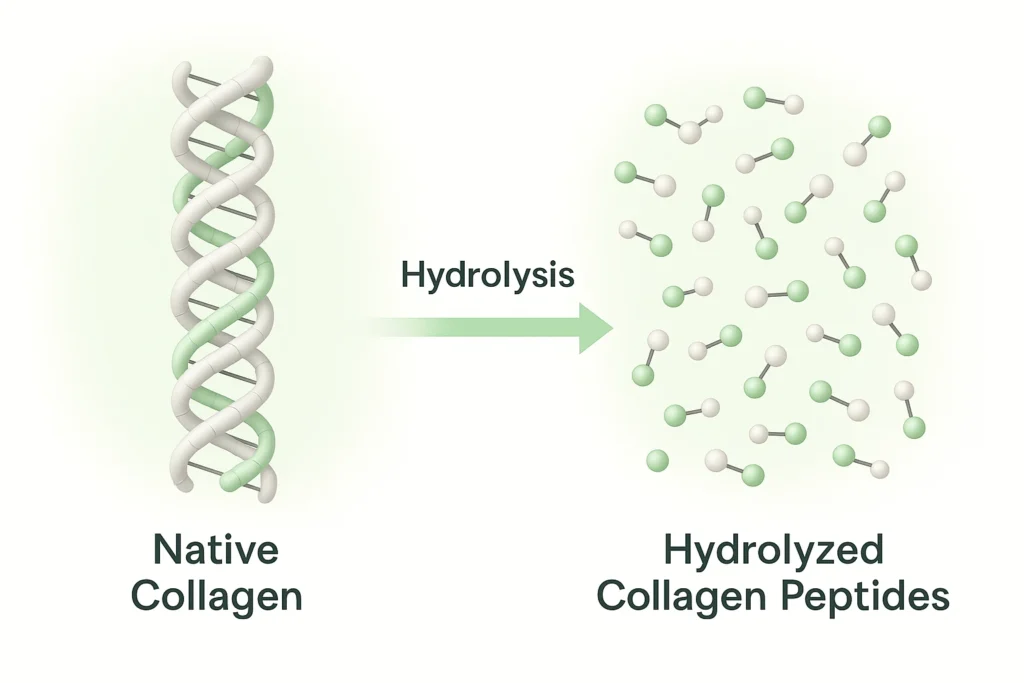
How Radiofrequency Technology Enhances Collagen Peptide Penetration
Let’s be honest — skincare isn’t just about slathering on serums anymore. Devices are in. And one of the biggest stars in the tech-meets-skin world? You guessed it — RF devices for face.
But here’s a question I get a lot: How exactly does radiofrequency (RF) help your skin absorb collagen peptides better? I mean, it’s one thing to use good ingredients, but are they actually getting where they need to go?
Let’s unpack that.
The Barrier We All Battle: The Stratum Corneum
Your skin is smart. It’s built to keep things out. Especially larger, water-loving (hydrophilic) molecules like peptides. This outermost layer — called the stratum corneum — acts like a doorman, and it doesn’t just let any guest stroll in.
That’s where radiofrequency steps in.
Enter Low-Energy RF (Yes, Even the At-Home Kind)
When people talk about RF facial device technology, they’re referring to a controlled form of heat that targets the deeper layers of your skin ,without harming the surface.
But here’s what’s super cool: studies show that low-frequency RF, especially when combined with collagen peptides wrapped in liposomes (think of them as delivery bubbles), can seriously improve how well those peptides penetrate.
One system in particular – called LLRF (low-level radiofrequency + liposome-encapsulated peptides) — showed 365% more peptide penetration than peptides alone. That’s not a typo. Three. Hundred. Sixty. Five. Percent.
However, products like Ebanel Liposomal Retinol Serum, Nip + Fab Retinol Fix Extreme, and Kay Casperson’s Peptide Serum, leverage liposome-encapsulated peptides, making them ideal companions for LLRF systems that boost peptide delivery by a staggering 365%.
And yes, that kind of tech isn’t just confined to dermatology clinics anymore. A growing number of RF devices for face at home are now designed with low-energy output, making them safe and effective for regular use.
But Wait — Doesn’t Heat Damage the Skin?
That’s a fair concern, and the answer is no. Not when it’s done right. What makes RF facial device technology so clever is that the heat isn’t intense enough to burn or disrupt the skin barrier.
Instead, it warms things up just enough to open intercellular “doorways” temporarily. This gentle heat can also spark some behind-the-scenes magic — like triggering your cells to loosen their tight junctions and allow those precious peptides in.
CONCLUSION
Hydrolyzed collagen peptides – those little but formidable fragments — are collagen broken down into smaller, more absorbable particles.
Whether you’re applying them topically or adding them to your morning supplement stack, they can actually assist smoother, firmer skin over time.
And when you link them with an RF face device? You’re not just soothing your skin – you’re actively encouraging deeper penetration, better absorption, and stronger collagen activation.
But here’s the issue most people miss: not all peptides are made equal.
In our next post — “Low vs. High Molecular Weight Peptides: What’s Best for Your RF Facial Device Routine?” We’ll dissect exactly why peptide size plays such a key impact in skin tightening, hydration, and how well your rf devices for face can actually offer results.
